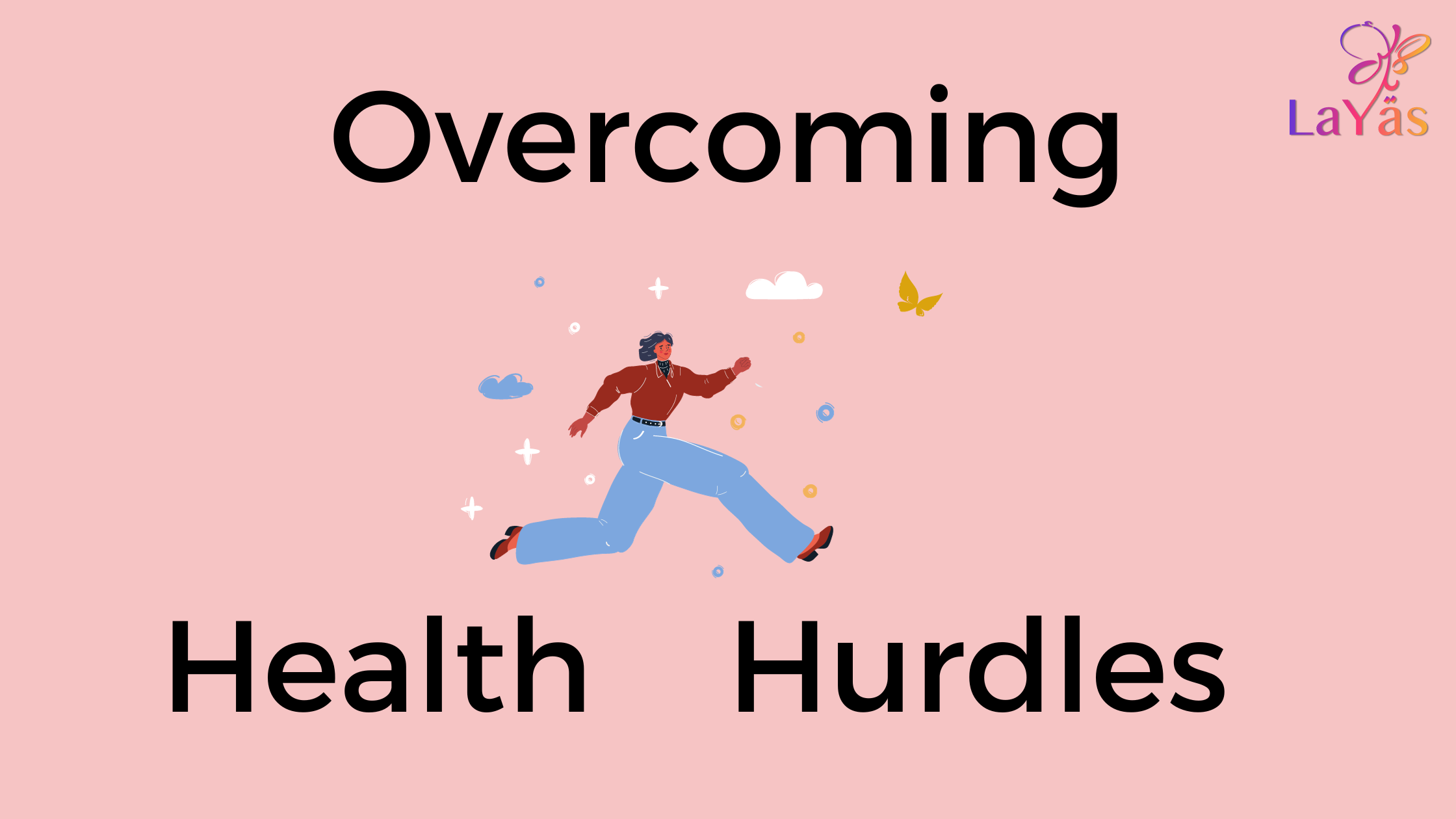The Path to Good Health


Nasreen Hasan
November 29, 2023
Tips and Strategies for Success
Good health is built on simple and modifiable lifestyle behaviors. These include physical activity, nutrition, sleep, hydration, sunlight/nature, avoiding alcohol and smoking, and spirituality. These lifestyle changes are affordable and accessible to most people. However, despite their simplicity, many struggle to stick with them. Let’s explore why these changes may be challenging and how we can overcome these obstacles for better health.
DNA – The Usual Suspect
For most of Human existence our brains and bodies were wired to survive in a world with limited access to food. We had to consume calories when they were available and store them for when they weren’t. Ensuring our daily meals while avoiding becoming someone else’s meal demanded significant energy expenditure.

For most of human history, ensuring our daily meals and avoiding becoming someone else’s meal demanded significant energy
So whenever we got the chance to rest, we seized it, because conserving energy was vital for survival in an environment where calories were scarce.
Consider the GCC countries as an example. Prior to the discovery of oil, people lived in an environment of scarcity. However, in a relatively short span of time (in evolutionary terms), we transitioned into an environment of abundance. Nowadays we have access to every food item you can imagine from all over the world and it can be delivered to your doorstep in 30 minutes or less.

Today, our meals are available without much effort.
The only problem is our genes have not had enough time to catch up and this has caused a disconnect between our brain’s instinctual drive to consume as much food as possible whenever it is available and to rest whenever we can and our body’s actual nutritional and physical requirements that suit our present environments. This concept is referred to as the “Thrifty Gene Hypothesis” coined by Professor James Neel.
Seizing small guaranteed wins is essential for our survival in environments of scarcity – which is why humans are hard-wired to prefer immediate rewards. However, the inclination towards instant gratification can pose a challenge when it comes to adhering to healthier lifestyle choices in the present day.
While it’s widely acknowledged that smoking is detrimental to our health (it’s even printed on every cigarette packet), but the instant gratification that a hit of nicotine gives us is worth more in the moment than the promise of better health 20 years down the line. Similarly taking the time to buy quality ingredients and prepare a nutritious meal is often an afterthought when there’s easy delivery options and convenient foods available in minutes. We do not like to delay gratification and will always look for a quick fix when possible.
The Tempting Appeal of Quick-Fix Solutions
When you’re seeking an “instant fix”, there’s always someone ready to provide it — for the right price, of course!
Here’s some bad news you already know – everyone wants your money. And when you want something, like good health, they’ll find something to sell you. They can’t sell you behaviors or motivation, so they market self-help books. They can’t sell you the desire to eat healthy, so they promote health supplements that supposedly provide all necessary nutrients. They can’t sell you exercise itself, so they sell you machines that target every muscle. Every few months someone comes up with a new diet guaranteed to help you lose weight – when every other diet has failed, or that one workout that is such a well-guarded secret you have to pay to find out what it is.
Saunas, ice baths, oxygen chambers, essential oils, fortified water – there’s a whole range of options out there. You’ve probably heard buzzwords like keto, paleo, biohacking, detoxing, homeopathy, and organic. It’s overwhelming.
Trying to do and afford all these things is nearly impossible, not to mention the time and energy required to determine which ones are safe and effective. Yet, we’re often tempted by the allure of instant results promised by clever marketing campaigns. And when we try these fads, only to find they don’t work in the long run, it can leave us feeling disheartened and hopeless – until the next one comes along. Maybe, just maybe, this new pill will be the one.
Desperately Seeking Motivation!
However, you already understand that enhancing your health doesn’t require gimmicks, gadgets, or miraculous remedies. We surveyed 230 individuals to determine what they believed contributed to their well-being, and over 90% indicated that their daily habits – such as sleep, nutrition, and physical activity – played a major role. Surprisingly, when we inquired why they struggled to maintain these behaviors, more than 60% cited a lack of motivation.
But what exactly is motivation? And more importantly, how can I bottle it up and sell it?

If only motivation was available in pill form!
Motivation is the key driving force behind our actions, determining whether we take action or not. We all desire good health and are aware that exercising contributes to our overall well-being. So, why do many individuals struggle to start and maintain a consistent exercise routine?
Friction is Such A Drag
The key lies in the concept of friction. Friction is the resistance we face when taking any action. It can be physical, psychological, or emotional in nature and typically consists of challenges such as lack of energy, time constraints, negative self-talk, or a sense of helplessness. Fear of failure is also a major source of friction for many people.

Friction to change is the biggest barrier to overcome.
Overcoming friction often involves the process of forming habits – habits are behaviors that have become almost involuntary. They do not require conscious effort and are often performed without any thought or intention. Habits are built over time, through repetition and reward. As we perform a certain behavior, it becomes more automatic and eventually forms into a habit that is irreversible due to the neural pathways established in our brain.
This is why developing healthy habits is so important; they increase motivation, reduce friction, and lead to long-term success. By creating an environment of convenience and reducing the barriers that keep us from taking action, we can drastically increase our chances of achieving our goals.
When people say they don’t have motivation to do something, what they usually mean is that they haven’t developed the essential habits to engage in that behavior.
However, you may already be aware, developing new habits and breaking old ones can be incredibly challenging.
Habits! Because Magic isn’t Real
Changing your behaviors depends on your ability to create new habits that ultimately replace established ones. It’s not a one-off process, but rather an ongoing cycle of developing and reinforcing behavior change until it becomes a part of your daily routine. Habits are formed by repeatedly reinforcing the same behavior until it becomes automatic and second nature. So if you want to adopt a new lifestyle, you must first create habits that will help you stay on track with your goals.
You don’t have to wait for a magic pill or fall for gimmicks to improve your health and achieve your goals. You possess the power to develop healthy habits by understanding how they work, setting realistic goals, and taking small steps each day.
Building healthy habits, especially in relation to health, can be a challenge. Luckily, there are various health behavior models that aim to explain how behavioral change through habit formation can be achieved. In our upcoming article, we will explore these models in depth and determine which one is best suited for specific personalities, situations and circumstances.
References and Recommended Reading:
James Clear. “Atomic Habits.”
Barry Schwartz. “The Paradox of Choice: Why More Is Less.”
Bandura, A. (2004). “Health promotion by social cognitive means”. Health Education & Behavior, 31(2), 143-164.
Lally, P., Van Jaarsveld, C. H. M., Potts, H. W. W., & Wardle, J. (2010). “How are habits formed: Modelling habit formation in the real world”. European Journal of Social Psychology, 40(6), 998-1009.
Neel, J. V. (1999). The “thrifty genotype” in 1998 1.
Phillips, L. A., & Gardner, B. (2016). “Habitual exercise instigation (vs. execution) predicts healthy adults’ exercise frequency”. Health Psychology, 35(1), 69–77.
Richard M. Ryan and Edward L. Deci. “Intrinsic and Extrinsic Motivations: Classic Definitions and New Directions.”
Wood, W., & Rünger, D. (2016). “Psychology of Habit”. Annual Review of Psychology, 67, 289-314.

